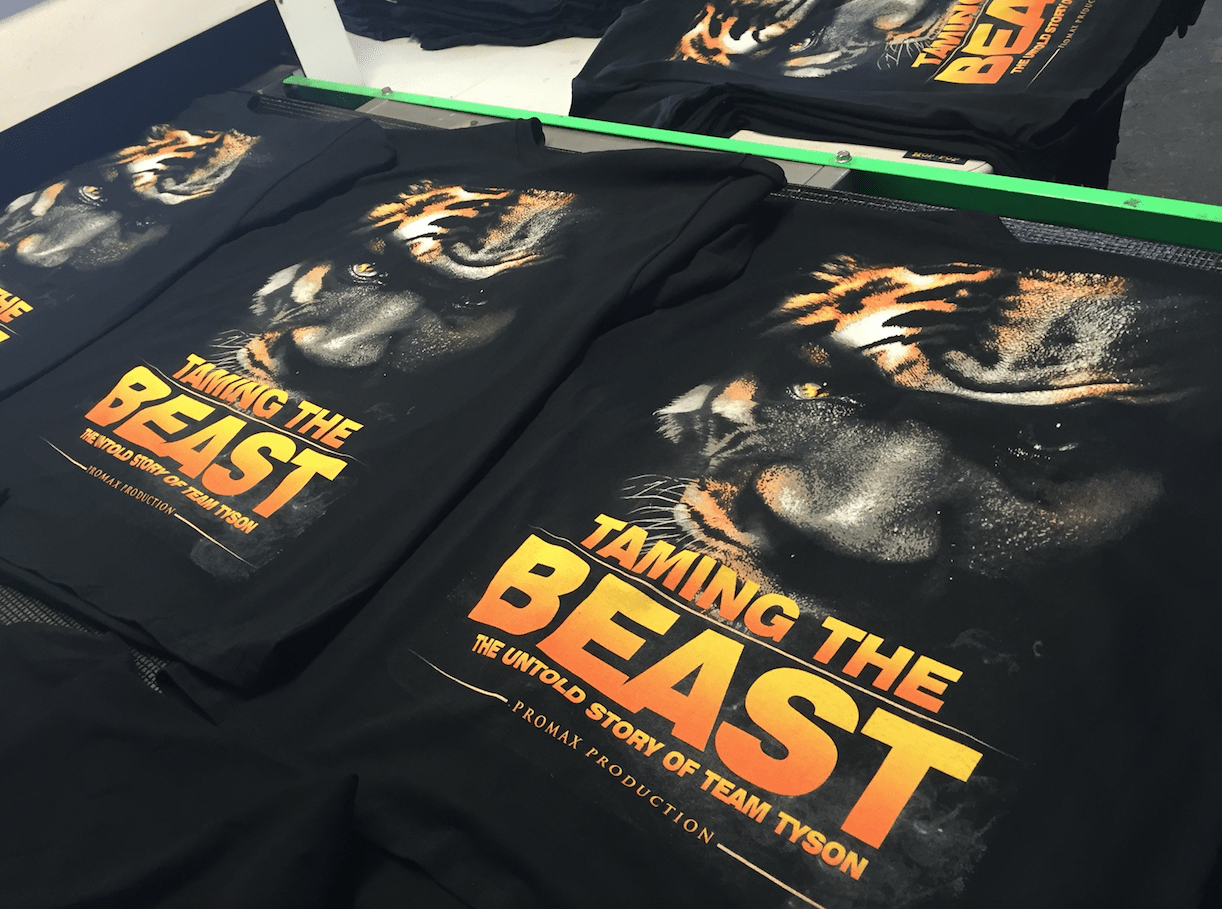Eco-Friendly Custom Screen Printing Options Available
Eco-Friendly Custom Screen Printing Options Available
Blog Article
Screen Printing Uncovered: Whatever You Required to Understand About Tee and Garment Printing Techniques
If you have actually ever wondered just how those vibrant layouts finish up on your favorite t-shirts, you remain in the ideal place. Screen printing is a remarkable method that combines art with strategy, offering endless opportunities for imagination. Understanding the basics, from equipment to ink choices, can considerably affect your outcomes. Ready to explore the important elements that make display printing an art type? Let's reveal the details that can boost your jobs.
The Essentials of Screen Printing: How It Functions
When you dive right into screen printing, you'll uncover it's both a science and an art. At its core, display printing includes developing a stencil, or display, that allows ink to pass with only in specific locations (screen printing kit). You begin by choosing your layout and preparing your display with a light-sensitive emulsion. Once you subject this solution to light, it hardens, leaving your style as an unfavorable room.
Following, you'll blend your inks and prepare your printing surface area. Setting the screen over the material, after that make use of a squeegee to press ink through the display onto the garment. This process needs accuracy, as you desire clear, lively prints. After printing, you'll treat the ink with warmth, guaranteeing it follows the material and lasts with laundries. Each step is vital, and understanding them will certainly boost your screen printing abilities, transforming easy garments into one-of-a-kind, meaningful items.
Kinds Of Display Printing Techniques
Once you realize the fundamentals of display printing, it's time to discover the various strategies that can boost your designs. One prominent approach is traditional display printing, where ink is pressed with a stenciled screen.
An additional choice is plastisol printing, known for its durability and dazzling colors, making it a favored for numerous brand names. Experiment with halftone printing to develop gradient effects and complex layouts.
Important Devices for Screen Printing
To attain sensational results in screen printing, having the appropriate devices is fundamental. You'll require a sturdy screen printing structure, which holds the mesh that moves your style onto the garment. Next, spend in high-grade mops; these are essential for using ink uniformly across the screen.
Choosing the Right Inks and Products
When selecting inks and products for screen printing, you require to consider the kind of ink that works ideal for your task. Think of material compatibility to assure your styles look last and terrific lengthy. Explore eco-friendly ink alternatives to make your printing procedure a lot more lasting.
Kinds Of Display Inks
Selecting the best screen ink is necessary for attaining lively, long lasting prints that satisfy your task's requirements. There are several kinds of display inks to check out. Specialty inks, such as metallic or glow-in-the-dark, can include unique impacts to your layouts.

Textile Compatibility Factors To Consider
Understanding textile compatibility is crucial for achieving high-grade screen prints, specifically because various products react uniquely to different inks. Always check your inks on sample fabric to assure they stick effectively and preserve color stability. In addition, keep in mind that textile weight and texture can influence the final outcome, so selecting the appropriate ink and material combo is essential for your job's success.
Eco-Friendly Ink Options
Environmentally friendly inks are coming to be a prominent selection for screen printers who want to lessen their environmental impact while maintaining quality. When selecting inks, think about water-based inks, which are less unsafe and easier to clean up contrasted to typical solvents.
In addition, look for inks made from renewable resources, such as soy or vegetable-based options. By selecting the ideal inks and materials, you'll not just create spectacular styles yet also add to a more lasting printing procedure. Make the button, and your prints will certainly mirror your dedication to the atmosphere!
Preparing Your Design for Display Printing

Submit Format Demands
To ensure your design looks dynamic and sharp on fabric, you'll require to pay close interest to file layout requirements for display printing. Begin with vector files like AI or EPS, as they can be scaled without losing top quality. If you utilize raster images, select high-resolution data, such as TIFF or PNG, preferably at 300 DPI. Prevent making use of JPEGs, as they can shed clarity when resized. Make certain your style has a clear background to protect against unwanted white sides on your prints. Lastly, keep shade modes in mind; CMYK is basic for display printing, so convert your RGB designs accordingly. By following these guidelines, you'll establish your art work up for a successful print.
Shade Splitting Up Methods
Shade separation is an essential action in preparing your layout for display printing, and mastering it can significantly improve your print quality. You'll need to damage your design right into specific colors, as each color requires a separate screen during printing. Start by determining all the colors in your design and produce layers each. You can make use of software application like Adobe Photoshop or Illustrator to separate and different shades properly. Be specific to conserve each layer as a separate file, typically in a layout like TIFF or PSD. This accuracy not only ensures exact color representation but likewise simplifies the printing procedure. By focusing on shade splitting up, you'll achieve professional and vibrant cause your screen-printed garments.
Resolution and Size
Achieving the ideal results in display printing starts with assuring your layout has the best resolution and dimension. Preferably, your art work must go webpage to the very least 300 DPI (dots per inch) for sharp, clear prints. If you utilize reduced resolution, your end product could look less than professional and pixelated.
When it pertains to dimension, consider the dimensions of your print location. Layout your art work to match the last print dimension, ideally creating it in the real measurements you'll be publishing. This way, you'll stay clear of any type of unforeseen scaling issues.
Constantly check your design in both vector and raster formats. Vector graphics can be scaled without losing high quality, making them ideal for screen printing. Preparing correctly will assure your style looks impressive on every garment!
Step-by-Step Screen Printing Process
Screen printing is a vibrant process that enables you to create dynamic styles on numerous surfaces. To get begun, you'll need a screen, solution, and your selected ink.
Pour ink onto the display and use a squeegee to press the ink with the stencil onto the textile. Lift the display very carefully and let the print dry. You've successfully display published your layout.
Tips for Effective Display Printing Projects
While you're diving into your display printing jobs, bear in mind that prep work is essential to success. Begin by gathering all your materials-- inks, garments, displays, and squeegees. A tidy work area helps prevent undesirable errors, so clean before you begin.
Next, validate your art work is high-resolution and effectively sized for your garment. Test your display for proper exposure and tidy it completely to stay clear of smudges. When blending your inks, adhere to the maker's guidelines to achieve the best uniformity.
Throughout printing, apply also stress with your squeegee for consistent outcomes. Do not rush; take your time to confirm each print meets your requirements. After printing, allow your garments completely dry entirely prior to taking care of or packaging them.
Last but not least, always keep a sample of your benefit future referral. By doing this, you can assess your progress and enhance your strategies over time. Satisfied printing!

Frequently Asked Questions
The length of time Does It Take to Establish up a Screen Printing Work?
Establishing a display printing task commonly takes around half an hour to an hour. You'll prepare the displays, mix inks, and change journalism. The moment varies based on complexity and experience, so stay arranged!
Can I Print on Different Fabric Types Utilizing the Same Technique?
Yes, you can publish on various material kinds using the exact same method, yet you'll need to adjust your settings and inks. Some fabrics absorb ink in different ways, so exploring warranties the most effective results for each product.
What Prevail Errors to Stay Clear Of in Screen Printing?
When screen printing, prevent usual errors like using the incorrect ink, neglecting appropriate direct exposure times, or skipping pre-press checks. Constantly evaluate your arrangement and keep tidy screens to guarantee quality outcomes each time.
How Can I Appropriately Tidy and Maintain My Screen Printing Equipment?
To appropriately tidy and keep your screen printing devices, you should frequently wash displays with proper solvents, check squeegees for wear, and assure all devices are saved dust-free and completely dry. Uniformity prevents costly repairs and boosts performance.
Is Display Printing Eco Pleasant Contrasted to Various Other Techniques?
Display printing can be more eco-friendly than other techniques, especially see this site if you utilize eco-conscious materials and water-based inks. By picking lasting products and techniques, you lower waste and reduce your effect on the planet.
Display Printing Uncovered: Whatever You Need to Know Regarding Tee and Garment Printing Methods
At its core, display printing involves creating a stencil, or screen, that enables ink to pass through only in specific areas. Position the screen over the material, then make use of a squeegee to press ink through the display onto the garment. One preferred method is traditional screen printing, where ink is pressed through a stenciled screen.When selecting inks and materials for screen printing, you need to take right into account the kind go to this site of ink that works best for your task.
Report this page